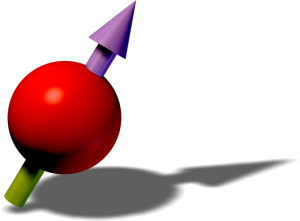by D. Scheiermann, L. A. Peña Ardila, T. Bland, R. N. Bisset, L. Santos
Abstract:
Breakthrough experiments have newly explored the fascinating physics of dipolar quantum droplets and supersolids. The recent realization of dipolar mixtures opens further intriguing possibilities. We show that under rather general conditions, the presence of a second component catalyzes droplet nucleation and supersolidity in an otherwise unmodulated condensate. For miscible mixtures, droplet catalyzation results from the effective modification of the relative dipolar strength, and may occur even for a surprisingly small impurity doping. We show that different ground-states may occur, including the possibility of two coexisting interacting supersolids. The immiscible regime provides a second scenario for double supersolidity in an array of immiscible droplets.
Reference:
Catalyzation of supersolidity in binary dipolar condensates,
D. Scheiermann, L. A. Peña Ardila, T. Bland, R. N. Bisset, L. Santos,
arXiv:2202.08259, 2022.
D. Scheiermann, L. A. Peña Ardila, T. Bland, R. N. Bisset, L. Santos,
arXiv:2202.08259, 2022.
Bibtex Entry:
@article{scheierman2022catalyzation,
title={Catalyzation of supersolidity in binary dipolar condensates},
author={D. Scheiermann and L. A. Pe~na Ardila and T. Bland and R. N. Bisset and L. Santos},
year={2022},
month = {Feb},
eprint={2202.08259},
archivePrefix={arXiv},
primaryClass={cond-mat.quant-gas},
journal={arXiv:2202.08259},
abstract = {Breakthrough experiments have newly explored the fascinating physics of dipolar quantum droplets and supersolids. The recent realization of dipolar mixtures opens further intriguing possibilities. We show that under rather general conditions, the presence of a second component catalyzes droplet nucleation and supersolidity in an otherwise unmodulated condensate. For miscible mixtures, droplet catalyzation results from the effective modification of the relative dipolar strength, and may occur even for a surprisingly small impurity doping. We show that different ground-states may occur, including the possibility of two coexisting interacting supersolids. The immiscible regime provides a second scenario for double supersolidity in an array of immiscible droplets.},
url = {http://arxiv.org/abs/2202.08259},
arXiv = {http://arxiv.org/abs/2202.08259}
}
